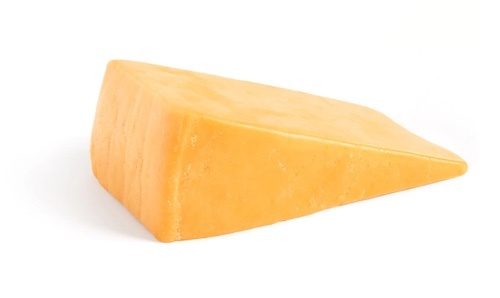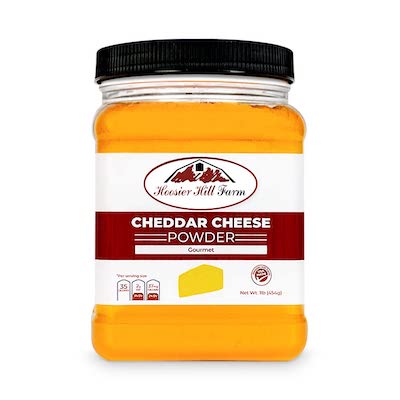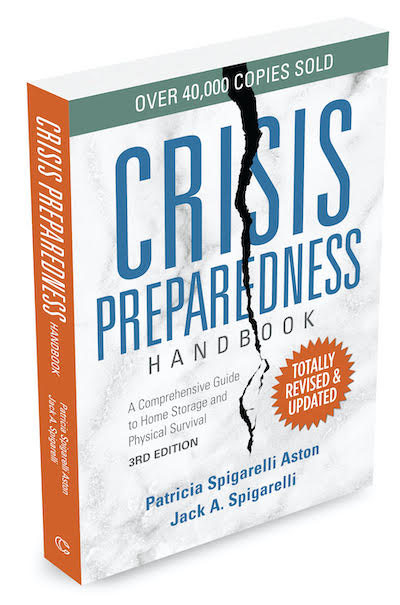Cheese is an important, versatile ingredient used in many menu options. In 2020 the average American consumed over 40 pounds of cheese! The preparedness challenge for week 41 is to add cheese to your food storage.
The most popular kind of cheese is mozzarella—think of all those pizzas—followed by cheddar. In a crisis, cheese can help maintain a more normal diet and can turn bland storage food into delicious meals. Store a variety of different cheeses—whatever combination your family prefers.
For this week’s challenge, choose from three different options. Cheese can be stored as fresh, freeze-dried, or dehydrated. Each type has advantages, and all of them contribute to a varied menu. To keep it simple, start by choosing one method for storing cheese.
2022 Preparedness Challenge Week 41
Choose one option for storing cheese and add enough to your food storage for your family for three months.
Option 1: Store Fresh Cheese

Store fresh cheese for the short term—three to six months if it is in its original packaging and kept cool in the refrigerator. Generally, the harder the cheese, the longer it will keep. Most initial spoilage to hard cheeses comes from mold, a fungus that grows in dark, damp, warm conditions. Since mold spores are all around us, keeping cheese in its original packaging and keeping it cool and dry is the key to avoiding mold and prolonging its shelf life.
It is possible to store hard brick cheese for several years if tightly wrapped in heavy plastic or foil to exclude air. Prolong the life of hard cheese by wrapping it in a cloth that is first soaked in vinegar, allowing it to dry, and then placing it in a plastic bag.
Moldy cheese can be salvaged by cutting away any mold growing on it.
How Much Fresh Cheese Should You Store?
Like many foods, how much cheese you store will depend on your circumstances and choices. Begin by determining how much fresh cheese your family uses in one month. What types of cheese do you typically use? Then stock up so you have enough cheese for one to three months. Date the packages to help keep track.
Or you can estimate based on the national average cheese consumption of forty pounds per person per year. In that case you would need just over three pounds of cheese per person for each month you desire to prepare for. As you use fresh cheese, replenish it so that you always have fresh cheese available.
Option 2: Freeze-Dried Cheese

Freeze-dried cheese is widely available as cheddar, Colby, Monterey Jack, and mozzarella.
Shredded cheese is most common, but cheese cubes are also sold. Freeze-dried cheese differs from dehydrated cheese in that it is actually cheese and not a “cheese product.”
It is best used as an ingredient in recipes and can be reconstituted or used as is. It makes four times its original weight when reconstituted. So a can of freeze-dried cheese that weights 2.5 pounds will reconstitute to 10 pounds of cheese.
The amount of freeze-dried cheese in a container and the serving size varies from one manufacturer to another. Compare products using the weight of the contents. Here are some common weights and their equivalent in fresh cheese.
- 10 ounces of freeze-dried cheese = 2.5 pounds of cheese
- 14 ounces of freeze-dried cheese = 3.5 pounds of cheese
- 16 ounces of freeze-dried cheese = 4 pounds of cheese
- 27 ounces of freeze-dried cheese = 6.75 pounds of cheese
- 32 ounces of freeze-dried cheese = 8 pounds of cheese
- 37 ounces of freeze-dried cheese = 9.25 pounds of cheese
HOW MUCH DOES FREEZE-DRIED CHEESE COST?
Freeze-dried cheese is about two to three times more expensive than fresh cheese.
How Much Freeze-Dried Cheese Should You Store?
Figure how much to store following this hypothetical example: A #10-can of freeze-dried cheese weighing 2.5 pounds is equivalent to about ten pounds of cheese. So, a case of six cans is equivalent to sixty pounds of cheese which, in a year, equals about five pounds per month. You may want to start by storing one can per family member. That would be equivalent to forty pounds of cheese for a family of four.
SHELF LIFE OF FREEZE-DRIED CHEESE
If stored properly in a cool, dry location and with oxygen absorbers, freeze-dried cheese has a shelf life of ten to fifteen years. However, some food storage companies claim that it will store for twenty-five years.
Option 3: Powdered (Dehydrated) Cheese

Powdered or dehydrated cheese is a product made with whey, starches, cheese flavorings, and assorted food additives. It is versatile and can be reconstituted with water or oil or used directly in casseroles, soups, sauces, dips, and baked goods.
The most common varieties are Parmesan, cheddar, Swiss, or a blended cheese. You can also find more uncommon cheese powders, like asiago, blue, feta, Romano, and provolone on specialty food websites.
Dry cheese can be used to make smooth cheese sauces to use in casseroles or with pasta and vegetables. Sprinkle it on popcorn or baked potatoes.
How Much Powdered Cheese Should You Store?
The shelf life for powdered cheese is three to five years, and it keeps about four months after opening. A #10 can contains approximately 100 servings. The exact amount will vary from one manufacturer to the next. Consider how many servings you would like per week and use that number to determine how many cans of dehydrated cheese powders you need.
How to Make Mac and Cheese with Powdered Cheese
Everyone has their favorite mac and cheese recipe whether it’s an all-inclusive box brand or old-fashioned homemade macaroni and cheese. Powdered cheese, much like the cheese in the little packets in a box, is a main ingredient in this recipe adapted from the Epicurean website:
INSTANT HOMEMADE MAC AND CHEESE

- 1 pound of short pasta such as macaroni, penne, or fusilli
- salt
- 1 1/4 cup whole milk or reconstituted powdered milk
- 1 cup cheddar cheese powder or combination of cheese powders
- 1 stick of butter, cut in pieces
COOKING DIRECTIONS
- Cook pasta in salted water, in a large pasta pot, stirring occasionally, until just al dente.
- Meanwhile whisk together milk and powder cheese. (If using powdered milk, whisk it with cheese powder first then add water.)
- Drain pasta and return to pot. Stir in pieces of butter until pasta is well coated.
- Add in milk mixture and cook, stirring until pasta is well coated and sauce begins to thicken, three to five minutes.
- Add salt to taste. (Some powdered cheese is already salty, so be sure to taste first.)
- Serve immediately.
Learn More

In my book Crisis Preparedness Handbook, Third Edition, find out more about preparing for a crisis or emergency. Learn more about storing foods and how to preserve food for storage. Also learn about water storage, sanitation, communication, transportation, etc. Crisis Preparedness Handbook can be found in both paperback and Kindle on Amazon as well as on ( my website CrisisPreparedness.com.
#emergencypreparedness #preparedness #foodstorage #crisispreparednesshandbook


